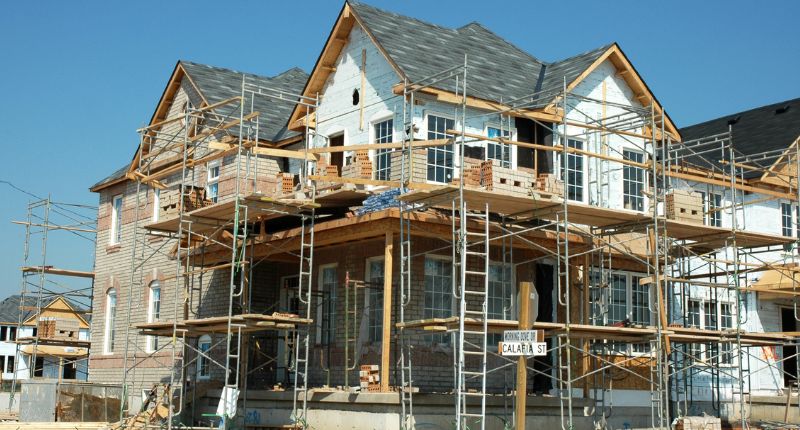- Perth leads in house price growth, with surges in both upscale and affordable suburbs.
- Remote investing spikes in Perth, driving significant price jumps.
- Reducing red tape, embracing innovation, and boosting vocational training may solve construction industry woes.
Across Australia, Perth has been singled out to be the best property market in terms of house price growth, according to the latest economic update written by Ray White chief economist Nerida Conisbee.
Perth’s priciest and most affordable suburbs slapped with price surges
Like other parts of the country, the price growth has hit the upscale suburbs hardest. Cottesloe’s median price has ballooned by over $380,000 over the past 12 months.
Weekly asking property prices, Cottesloe, WA 6011
Importantly, the affordable suburbs have also witnessed significant price hikes. For instance, houses in Bibra Lake spiked from $575,000 last year to $690,000 as of late, outpacing the premium suburbs and making it one of the strongest growth hotspots in Perth.
Weekly asking property prices, Bibra Lake, WA 6163
The surge in interstate investor activity has played a big role in the significant price jumps experienced in Perth’s cheaper suburbs.
Remote investment in Perth has spiked
While Ray White does not have data at hand on this trend, MCG Quantity Surveyors’ data found that remote investing skyrocketed in 2023.
The average distance between a property owner’s home and investment in Western Australia (WA) nearly doubled between last year and now, from 857 kilometres (km) to 1502 km.
There were many reasons behind WA’s investor frenzy. Homes have been relatively affordable compared to their eastern counterparts, and rental yields have been robust.
Perth rental yields
Furthermore, the cost of building a house in Perth has outstripped house prices over the past two years. Thus, buying an established home in the more affordable suburbs has become a very attractive value proposition.
While house prices rose by 20% in Perth over the past two years, construction costs grew by 40%, driving more investors and owner-occupiers into the established market.
Unless house prices rise to the point where they keep pace with construction costs, constructing new homes will remain unviable for many buyers.
Construction woes present across most of Australia
This trend was also evident in other parts of the country, with construction costs having spiralled to the point where replacement costs in many areas have far outpaced the cost of established homes.
Capital city house prices have increased by 11% while construction costs have risen by 27%. For there to be any change in the status quo, construction prices must ease substantially, or established home prices must increase dramatically.
However, the former is unlikely to happen soon, as material prices have been largely stable. Until building more homes becomes tenable, buyer interest will likely be concentrated in the established home sector.
Therefore house prices will probably continue to march upward in 2024.
MCG Quantity Surveyors managing director, Mike Mortlock, told The Property Tribune that the sector’s persistent labour shortage was the main culprit behind the elevated construction costs.
“International shipping costs are back to pre-pandemic levels, so the majority of the extra construction costs are coming from a labour shortage. Around a third of construction companies are reporting labour shortages, and the Government infrastructure pipeline is exacerbating the issue.”
What triggered the construction industry’s insolvency crisis?
The construction industry has suffered from an insolvency crisis, with companies of all sizes collapsing. Mortlock explained that the crisis was kickstarted by builders committing to jobs at low margins at the start of the COVID-19 pandemic to secure more work at a time marked with uncertainty.
“At the beginning of the pandemic, builders were looking to secure a pipeline of future work due to the uncertainty of the situation. Sadly that meant jobs being accepted on low margins,” he said.
“Because a construction timeframe can cover the course of a year or more, the increase in materials and labour costs meant that builders had a pipeline of work with zero or negative margin.
“This unfortunately saw the construction industry reporting unprecedented numbers of insolvencies. It’s reasonable to assume that a shortage of competition would lead to a decrease in residential construction costs.
“However, there’s still a shortage of trades to fulfil the demand and many trades are being enticed by insurance or Government projects.”
Adoption of modular techniques and less red tape necessary to rejuvenate construction
Mortlock argued that the best way to help the industry out of its rut was for the Government to remove unnecessary red tape and taxation, and for the industry to embrace new innovative technologies.
“Plenty of studies have highlighted that the red tape, planning and taxation on new housing accounts for a huge proportion of the total cost. These imposts need to be considered carefully and unwound to move the needle on construction costs and timelines.”
“The industry also needs to move more to modular and pre-cast construction techniques. The construction industry is fairly slow to adapt new industry practices so there’s a role to play from policy makers in incentivising the adoption of new technology.”
Mike Mortlock, MCG Quantity Surveyors
Furthermore, he recommended that the Government do more to push young Australians into construction.
“The rise in costs is not a result of construction companies simply chasing margins. The cost increases have been a result of the global shipping and material production downturn during the pandemic and a continued shortage of construction labour.
“Government infrastructure demands are furthering this issue, and the country needs to invest further into vocational training incentives for school leavers to join trade apprenticeship programs.”








